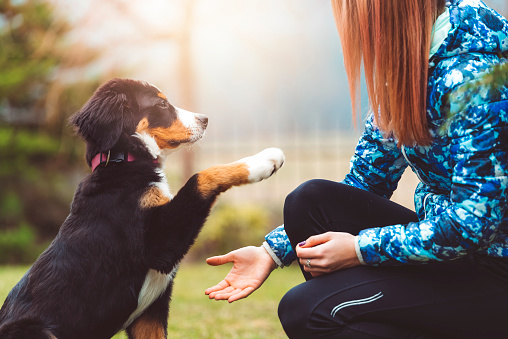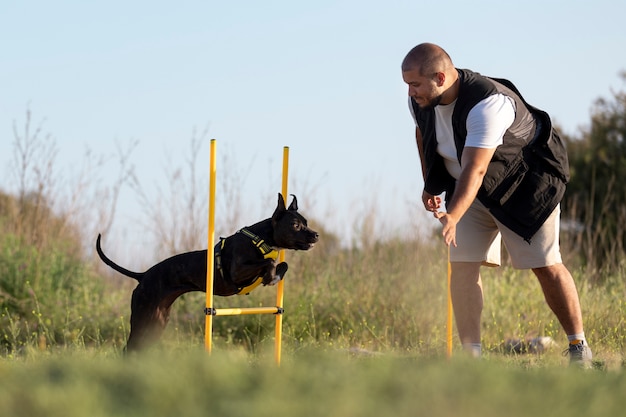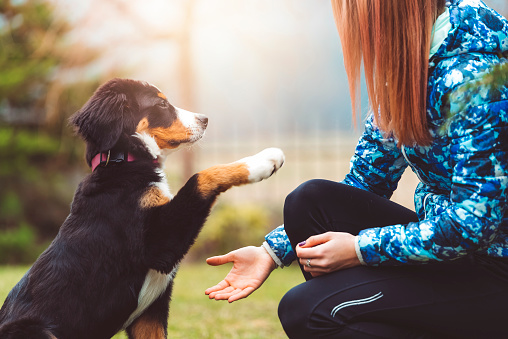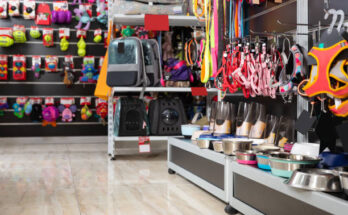PET TRAINING SESSIONS: KNOW HOW TO MAKE MOST OF IT
Pet training sessions are very important for you and your dog. These training sessions can be really beneficial in shaping the behaviour of your pet. But one needs knowledge about pet training sessions; moreover how to make most of it. In this article, find everything you need to know about pet training sessions in this everything.
Open up for communication

IMAGE CREDITS: istockphoto.com
The first sign of a successful pet training session is open communication. Parents may ask a lot of questions at first, but as the session(s) progress, they might start to hold their inquiries. Encourage pet owners to keep asking questions and to speak up if they need help or are having difficulties. After your sessions are over, the lines of communication should remain open. Make sure your clients who are pet parents are aware of when, where, and how to contact you should they have any queries or worries. They will continue to feel confident as they train their pet as a result.
Using Kinn kleanbowl: training sessions
Treats are a typical form of positive reinforcement used by all types of pet trainers during sessions. Keeping and storing rewards close hand during sessions, however, can present issues. The placement of treats too far from the training area or the inability to keep them on your person might confuse and disturb pets. During training sessions, the Kinn Kleanbowl provides a quick and easy way to store and keep treats close at hand. 100% microbial and bacterial-free pet food, treat, and water bowls are what we call Nourish-Pet Refills.
End session on a positive end: training sessions

IMAGE CREDITS: Unsplash.com
Both parents and animals want to feel like each session was worthwhile and that a goal was reached. You can strive to discover methods to end on a positive note no matter what training level each pet enters at. If the pet can successfully carry out one instruction, whether it be as straightforward as practicing their best sit, stay, or paw at the end or something a little more complicated, the training session can be concluded.
Encourage reinforcement training: training sessions
They will lose it if they don’t use it. Pets need to practice the skills and techniques they learnt during training sessions in order to avoid reverting to previous habits, just like people do. Encouragement of reinforcement training helps make animals and their guardians secure and content. Discussions about reinforcement training frequency should be personal. Some pet owners might not think it’s necessary, in which case you should make sure to provide them the instructions and training you went through with their pet in case they need to refer to it again in the future.
Asking questions: important tool: training sessions

IMAGE CREDITS: Unsplash.com
Your comprehension of the subject is crucial! There is possibility for error if you don’t comprehend what to do or why we are doing it, which might have a negative impact on the final outcome. If I cover something and you want more details, just ask! For the humans to be able to act as needed in between sessions, it is crucial that they comprehend the training. They are destined for failure if they don’t comprehend! I am aware that asking questions can make some people feel uncomfortable, but trust me. Most dog trainers enjoy discussing how dogs learn.
Practice and learn: training sessions
Once more, this is literal. It is required and expected that any homework you get as part of your dog training strategy be completed. Repetition is essential to learning. In the end, perfect practice makes perfect! And tell your trainer straight out that you did it! The best course of action is to admit to not practicing because, believe me, we can tell if you haven’t. Everyone engaged benefits from the time and energy savings. Do not apologize if something comes up; simply inform us and continue. Life often interferes with plans; therefore, I believe it is preferable to acknowledge this and resolve to act more responsibly in the future.
We’ve got some easy tricks to teach your dog

IMAGE CREDITS: Unsplash.com
- Sit: If necessary, gently tap or press your dog’s back until they sit. When he sits, click and give him dog biscuits as a reward. After that, call the command “Sit,” and give your dog a treat whenever they comply with the command.
- Shake hand: Give your dog a treat in your palm to smell. Then, clench your fist. They will try to consume it with their mouths since they will crave that treat. Resist giving in! When that doesn’t work, they will try to convince you to open your hand by placing their paw on it. Press the clicker and give them the treat the moment they place their paw on your palm. Repeat a number of times. Try one more without holding a goodie. Click to get paid. When your dog extends their hand to you, click and praise them once again. After that, you can give the command a name and carry out the clicker method’s other phases.
- Spin: Once more, use a goodie to entice your dog. Now, move your hand clockwise close to your dog’s mouth to entice them to follow the hand. Press the clicker and give them the treat once they have finished one round. When your dog accepts the spin after a few rounds, switch to using an empty hand and reward him with the treat from the other hand. Say the instruction, do the gesture, click, and then provide the prize. Simply say the command without making a hand motion, click, and reward after numerous repetitions. Your dog can now spin, voilà!
- For this one, train your dog using the model-rival strategy. Have a teddy bear on the floor, and when you pick it up, the trainer will click and praise you. Continue doing this until your dog notices and begins to grasp the teddy as well. When you or the dog successfully grabs the teddy after saying “Where’s Teddy?” again, the trainer will click and reward you. Add a dolphin plush to the mix and ask, “Where’s Teddy?” To teach your dog to grab the teddy instead of the dolphin, grab it as a reward. Keep repeating and begin gradually eliminating the clicker and incentive!
USEFUL LINKS:
- https://www.dogseechew.in/blog/how-to-make-most-of-your-dog-training-sessions
- https://www.puppyleaks.com/dog-training-easier/
Prepare a specialized diet for your dog, see: https://theperfectblogger.com/specialized-diet-cater-your-dog-with-love-and-care/
An owner’s guide to health and fitness, click: https://theperfectblogger.com/an-owners-guide-to-health-and-fitness-at-home/





One Comment on “PET TRAINING SESSIONS: KNOW HOW TO MAKE MOST OF IT”